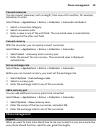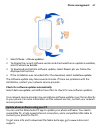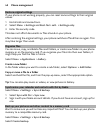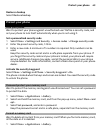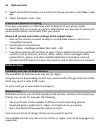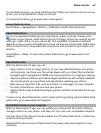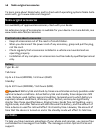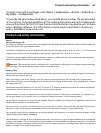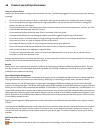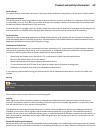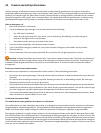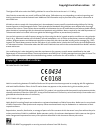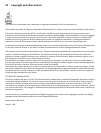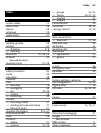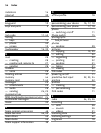
To stop receiving the messages, select Menu > Applications > Extras > Collection >
My Nokia > Unsubscribe.
To provide the service described above, your mobile phone number, the serial number
of your phone, and some identifiers of the mobile subscription are sent to Nokia when
you use the phone for the first time. Some or all information may also be sent to Nokia
when updating software. This information may be used as specified in the privacy
policy, available at www.nokia.com.
Product and safety information
Battery
Battery and charger info
Your device is intended for use with a BL-4U rechargeable battery. Nokia may make additional battery models available for
this device. Always use original Nokia batteries.
This device is intended for use when supplied with power from the following chargers: AC-8, AC-10, AC-11. The exact Nokia
charger model number may vary depending on the plug type, identified by E, X, AR, U, A, C, K, B, or N.
The battery can be charged and discharged hundreds of times, but it will eventually wear out. When the talk and standby
times are noticeably shorter than normal, replace the battery.
Important: Talk and standby times are estimates only. Actual times are affected by, for example, network conditions,
device settings, features being used, battery condition, and temperature.
Battery safety
Always switch the device off and unplug the charger before removing the battery. When you unplug a charger or an accessory,
hold and pull the plug, not the cord.
When your charger is not in use, unplug it from the electrical plug and the device. Do not leave a fully charged battery
connected to a charger, as overcharging may shorten the battery’s lifetime. If left unused, a fully charged battery will lose
its charge over time.
Always keep the battery between 15°C and 25°C (59°F and 77°F). Extreme temperatures reduce the capacity and lifetime
of the battery. A device with a hot or cold battery may not work temporarily.
Accidental short-circuiting can happen when a metallic object touches the metal strips on the battery, for example, if you
carry a spare battery in your pocket. Short-circuiting may damage the battery or the connecting object.
Do not dispose of batteries in a fire as they may explode. Dispose of batteries according to local regulations. Recycle when
possible. Do not dispose as household waste.
Do not dismantle, cut, open, crush, bend, puncture, or shred cells or batteries. If a battery leaks, do not let battery liquid
touch skin or eyes. If this happens, immediately flush the affected areas with water, or seek medical help.
Do not modify, remanufacture, attempt to insert foreign objects into the battery, or immerse or expose it to water or other
liquids. Batteries may explode if damaged.
Use the battery and charger for their intended purposes only. Improper use, or use of unapproved batteries or incompatible
chargers may present a risk of fire, explosion, or other hazard, and may invalidate any approval or warranty. If you believe
the battery or charger is damaged, take it to a service centre for inspection before continuing to use it. Never use a damaged
battery or charger. Only use the charger indoors.
Product and safety information 47



